Text
Small Barangay, Big Preparations
Our country has long been vulnerable to natural calamities, even more so now with the rising severity of disasters brought about by climate change and pollution. Each small community of our country is packed with life and livelihood so making sure that each barangay is well-prepared for disasters is a necessity. Think of it as making sure that each cog in the machine is well-oiled. Even if one cog falters, it can heavily impair the machine’s function. In this case, the cog failing could mean many lives lost and livelihoods destroyed.
To familiarize ourselves with the inner workings of Barangay 397’s Disaster Risk Reduction and Management (DRRM) projects, we visited their Barangay Hall for an interview. We chatted with Kagawad Lalaine Lorenzo, who took the time to answer our queries thoughtfully.

According to her, during her time as an official in the barangay, they experienced Typhoon Ondoy back in 2009, and it caused severe flooding along España. In fact, flooding due to heavy rains, Kgd. Lorenzo says, is the most common problem that the barangay runs into, especially along España Boulevard where it isn’t as elevated. This problem can be particularly troublesome for vendors who make their living along the area.

In the past years, there have also been occasional earthquakes. For this reason, they conduct an earthquake drill twice a year. The drill includes practicing the standard “Duck, Cover, and Hold” procedure, and methods of first aid and transport for an injured person. Even condominiums within the area hold earthquake drills, however, as Kgd. Lorenzo pointed out disapprovingly, many tenants don’t participate.
A necessary aspect of disaster preparedness is the early detection and dissemination of public warnings for an oncoming calamity. News forecasts and online updates help Barangay 397’s officials catch early reports of calamities. They also have a group chat for coordinating with the Manila Barangay Bureau, and secretaries and treasurers of different barangays. Upon learning of any nearing disaster, the barangay officials get to work on informing the residents by issuing a public address and posting announcements on their Facebook pages.
When the time comes that a calamity does arrive, the barangay is stocked up on over-the-counter medicine, first aid kits, and other potentially useful equipment like stretchers and wheelchairs. They also have tricycles and motorcycles for emergency patrolling and transportation. Residents can evacuate to Paaralang Juan Luna along G. Tolentino St. in cases of severe calamities. The nearby University of Santo Tomas is also a potential safe space because its open field is ideal for earthquakes.
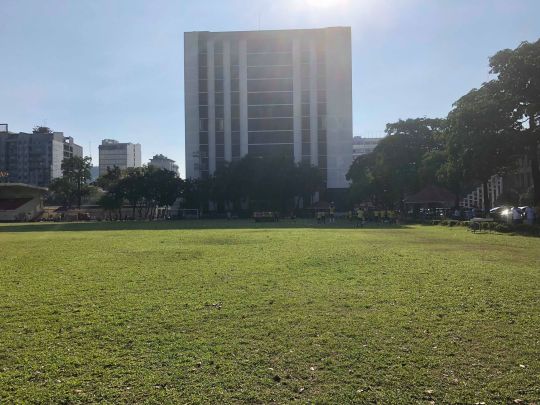
What UST is not advisable as a safe space for, Kgd. Lorenzo explained, is for floods. Because of UST’s nature as a catch basin, there have been many times when flood water has entered UST’s classrooms while the streets of Barangay 397 remain relatively dry. Kgd. Lorenzo also added that during minor flooding, evacuation is not necessary because most residents can retreat to the safety of their home’s second floor. Furthermore, there are conveniently several hospitals near the area so emergency medical help is quite accessible.
As for particular programs for vulnerable sectors of the community (e.g. the elderly, PWDs, children), the barangay is somewhat lacking. Instead, they operate on the principle that help during calamities must go to any resident that is immediately in need of it. Additionally, Kgd. Lorenzo reasoned that the majority of the barangay’s population are able-bodied adults. Hence, not many people need to receive priority attention and care.
Once a typhoon or an earthquake has passed, barangay officials distribute goods and supplies to residents that are heavily affected. Aside from using the allocated calamity funds, fundraisers are held to help fund these donations.
While the weather is calm and there are no reports of oncoming typhoons, the barangay has several ongoing preventive measures that can minimize the effects of calamities. To address the community’s main issue of flooding, drainage systems are being repaired, concrete pipes are being replaced with flood gateways, and sidewalks and streets are being elevated. There are flood detection posts that can help measure the severity of floods. At the time of our interview, they were working on updating their list of emergency hotlines, a necessary step due to landline numbers in Metro Manila recently shifting from having seven digits to eight digits.
We also asked if we could have a look at the barangay’s DRRM plan. Kgd. Lorenzo explained that previously, they only had a checklist of what needed to be prepared. However, current Mayor Isko Moreno, with the help of the Manila Disaster Risk Reduction and Management Committee (MDRRMC) itself, is having a new DRRM plan processed for the barangays of Manila. At the time of the interview, the plan had yet to be finished and distributed to the barangays. The DRRM plan will be good for three years.
After conducting the interview, we thanked Kgd. Lorenzo for sparing us her time and then headed out for the Community Walk.

Upon stepping out of the Barangay Hall, we immediately noticed disaster-related posters on their bulletin board.
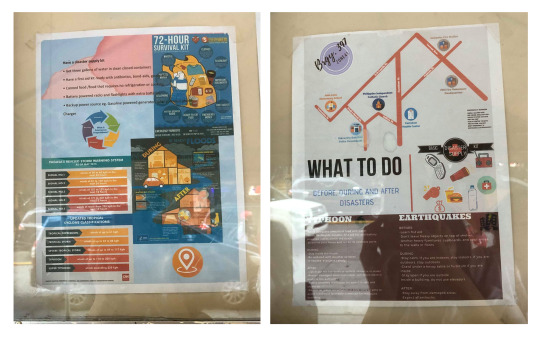
We walked further around the barangay and noticed the implements that Kgd. Lorenzo had mentioned, such as the flood detection posts. We also took note of the waste segregation bins situated throughout the barangay. Encouraging the public to dispose of garbage properly can ultimately help reduce flooding within the area.
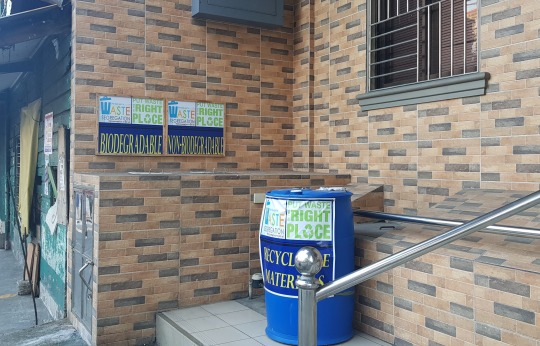
During the interview, Kgd. Lorenzo had also mentioned that sites of construction can be hazardous during times of disaster, likely because they can be a cause of injury. Along the sidewalk of España Blvd, we noticed unfinished reparations which can be dangerous during floods.
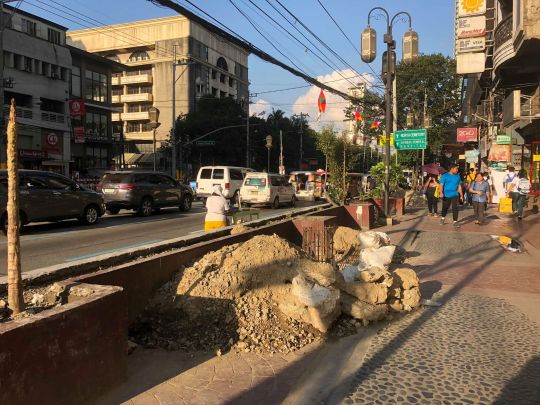
We also made a point to see Paaralang Juan Luna, Barangay 397’s potential evacuation center. According to Kgd. Lorenzo, the school has six floors and can house around 6,000 people.
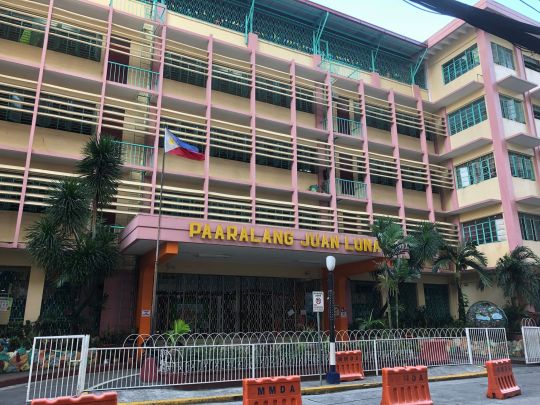
All in all, this entire experience has made me more appreciative of the efforts of barangay officials. It has become quite apparent that they are active in preparing the community for possible disasters. With that said, additional programs and improvements can still be made, especially with regards to the vulnerable sectors of the community.
With the efforts of the barangay officials, it is equally important that, as residents, we cooperate with their projects. Observing proper waste management and sharing our disaster preparation knowledge with our peers can help minimize the effects of disasters. Help can also be extended financially when the barangay conducts fundraisers for those heavily affected by disaster.
1 note
·
View note